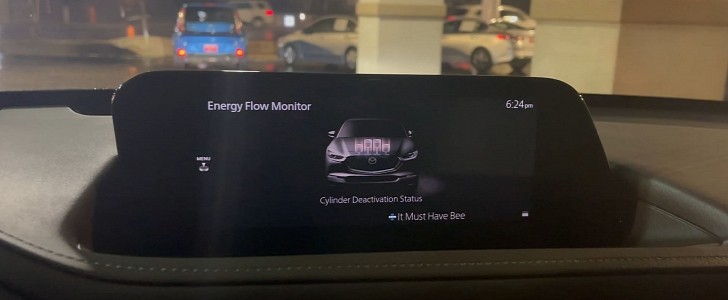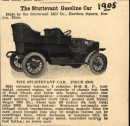Today we have the incredible luck of choosing exactly the kind of car and powertrain we want. The auto industry was never this diverse in its offerings. This might mean that we should better inform ourselves, but it doesn’t take away the joy we ought to feel every time we scan the market for something new or used. With the plethora of options available and the changes required for meeting emissions standards, you may be inclined to think cylinder deactivation is something that just recently appeared. Here’s the full picture.
A couple of years ago I took a 2019 BMW M850i xDrive Cabriolet on a two-week trip. It was the first time when I had the chance to spend a lot of time with an all-new car that had a clean, very low-mileage V8 under the hood. I took it as a blessing and had the time of my life as I drove for over 3,200 miles (5,150 kilometers). Together with my significant other, we managed to disconnect from all the worries we had back then. Time was eventually going to prove we mistakenly identified those hardships as being the worst. They were nothing compared to was going to come. But we continued to enjoy our little escape from the ordinary.
The world was not only slowly becoming our oyster, but a big place in which we were finally finding ourselves in harmony with everything. It was magical, and now we appreciate that whole experience even more. You know what happened in the last two years. There’s no need to rewind.
Mind you, I was mostly cruising. The 523 HP the BMW had available were tempting me to use them all, but that happened mostly on the highway and for short periods of time. I wasn’t racing anyone, and I was most certainly not in a hurry. Later I’ve found out the car had cylinder deactivation technology that wasn’t just a marketing plot. At first, I thought it’s weird for a V8 droptop to have such an engine option, but it worked marvelously!
I’ve recently been reminded of that moment by seeing a Facebook notification that wanted me to know what I was doing three years ago and how much fun I had back then. It got me thinking: “when was this first introduced and why?” Here’s what you need to know, without too many details that might bore you.
For starters, cylinder deactivation isn’t new – at all. This engine technology was first explored almost over a century ago! People wanted efficiency back then too, so they tried to come up with ways to improve how energy is used for powering mobility. I, for one, thought that people in the early 20th century didn't care for saving fuel. Boy, was I wrong!
But, first, what is this thing referring to? Well, it’s in the name. For the sake of saving fuel, cars will shut down temporarily some of their cylinders. The technology is widespread now and is found in many cars under different implementations. BMW and Mazda, for example, are using the same idea but in a different manner: one shuts the cylinder while coasting, the other does it even when you’re traveling in the city. There’s no point in debating which is better or who has the best solution. It would take a lot of time and it would replace the goal of this article: to see a brief history of this useful and somewhat unnoticed technology.
The first time it was used was all the way back in 1905. A Boston-based company called Sturtevant Mill Co. built the Sturtevant Gasoline Car that featured a 6-cylinder 45-HP engine. The driver had the option to stop three of the cylindrical containers with the help of a button, according to Dyler. It was like choosing a drive mode – that easy!
Later, the same option was also available for the 1907 Sturtevant Touring Car.
What surprised me the most, is that cylinder deactivation was also found in trucks (lorries, if you’re British). The IFA W50 made in East Germany was very popular. It even became a firetruck in some countries. At first, it had only a small 110-HP four-cylinder diesel engine, but with some help from MAN it got to 125 HP in the end. Built from 1965 until 1990, this vehicle was able to automatically disconnect two out of its four cylinders when the driver wasn’t pushing it or when there wasn’t any heavy load to haul. This was happening almost 60 years ago!
Cadillac sure made its mark, though. Their push to make the powertrains more efficient and achieve what the regulations imposed then showed carmakers they need to act on saving fuel for their line-ups.
Now, almost everyone in the auto industry is using cylinder deactivation or variable displacement. With gas prices going up, pollution standards becoming even stricter, and the push the switch to EVs or other forms of powering mobility, it’s a good thing this technology exists in the many forms it has taken today. This a win for innovation, but a bigger victory for customers, drivers, and companies that rely on a fleet of efficient vehicles.
The world was not only slowly becoming our oyster, but a big place in which we were finally finding ourselves in harmony with everything. It was magical, and now we appreciate that whole experience even more. You know what happened in the last two years. There’s no need to rewind.
Surprise often sparks curiosity
Aside from what we felt back then as a couple roaming the country, I can remember the exact moment when my jaw dropped after I checked the fuel consumption. It’s like it happened yesterday. I thought it was an error. I was already suspecting something might be off because I didn’t have to stop often at the gas station to refuel, but, trust me, I certainly wasn’t expecting to see 38.5 mpg (6.1 l/100 km) after our longest drive of about 342 mi (550 km).Mind you, I was mostly cruising. The 523 HP the BMW had available were tempting me to use them all, but that happened mostly on the highway and for short periods of time. I wasn’t racing anyone, and I was most certainly not in a hurry. Later I’ve found out the car had cylinder deactivation technology that wasn’t just a marketing plot. At first, I thought it’s weird for a V8 droptop to have such an engine option, but it worked marvelously!
For starters, cylinder deactivation isn’t new – at all. This engine technology was first explored almost over a century ago! People wanted efficiency back then too, so they tried to come up with ways to improve how energy is used for powering mobility. I, for one, thought that people in the early 20th century didn't care for saving fuel. Boy, was I wrong!
Shy beginnings, big results
While the Clemson University of Vehicular Electronics (CUVE) claims that GM’s Cadillac first introduced the cylinder deactivation technology in 1981, the truth is people toyed with this idea long before that.But, first, what is this thing referring to? Well, it’s in the name. For the sake of saving fuel, cars will shut down temporarily some of their cylinders. The technology is widespread now and is found in many cars under different implementations. BMW and Mazda, for example, are using the same idea but in a different manner: one shuts the cylinder while coasting, the other does it even when you’re traveling in the city. There’s no point in debating which is better or who has the best solution. It would take a lot of time and it would replace the goal of this article: to see a brief history of this useful and somewhat unnoticed technology.
The first time it was used was all the way back in 1905. A Boston-based company called Sturtevant Mill Co. built the Sturtevant Gasoline Car that featured a 6-cylinder 45-HP engine. The driver had the option to stop three of the cylindrical containers with the help of a button, according to Dyler. It was like choosing a drive mode – that easy!
Later, the same option was also available for the 1907 Sturtevant Touring Car.
Cadillac sure made its mark, though. Their push to make the powertrains more efficient and achieve what the regulations imposed then showed carmakers they need to act on saving fuel for their line-ups.
Now, almost everyone in the auto industry is using cylinder deactivation or variable displacement. With gas prices going up, pollution standards becoming even stricter, and the push the switch to EVs or other forms of powering mobility, it’s a good thing this technology exists in the many forms it has taken today. This a win for innovation, but a bigger victory for customers, drivers, and companies that rely on a fleet of efficient vehicles.










